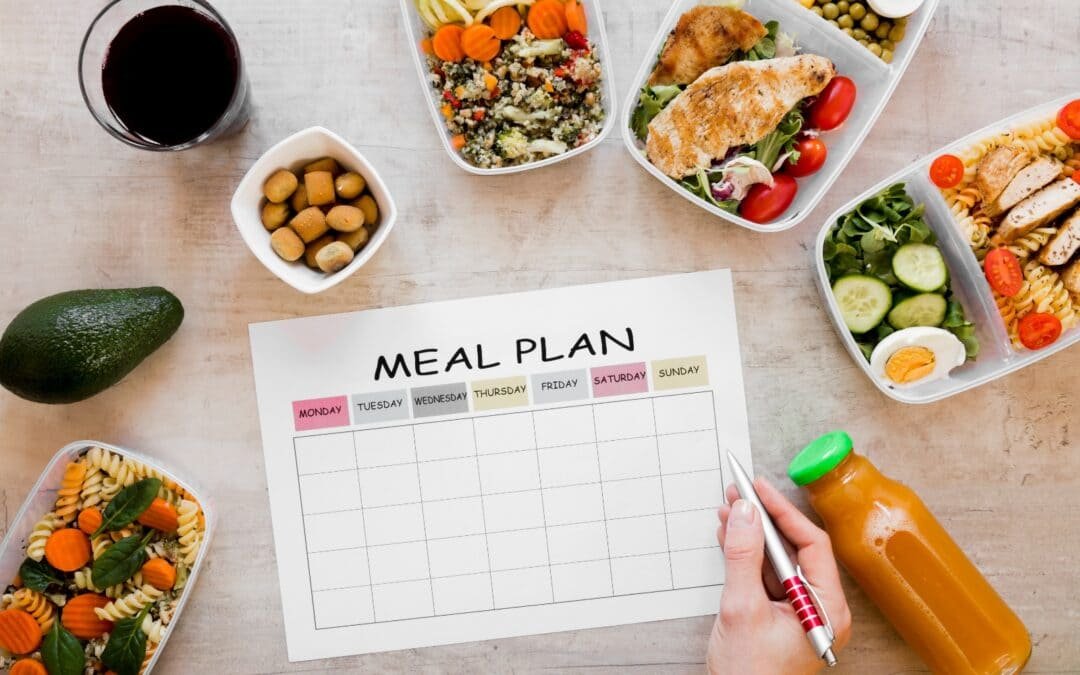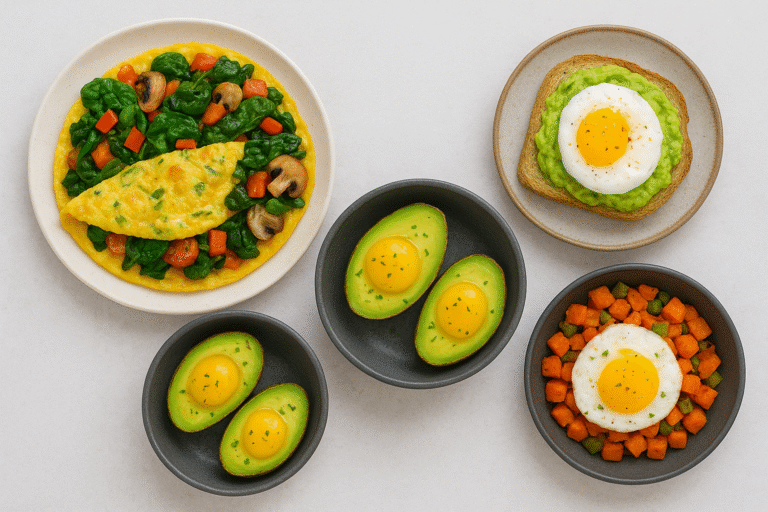How to Create a Balanced Diet on a Budget
Creating a balanced diet on a budget may seem like a challenging task, but with thoughtful planning and smart choices, it’s entirely possible. Eating healthily doesn’t have to break the bank; it simply requires knowing where to spend your money and making the best use of the ingredients available. This article will guide you through actionable steps to help you create a balanced diet while staying within your budget.
1. Understand the Basics of a Balanced Diet
Before diving into budget-friendly strategies, it’s important to understand what constitutes a balanced diet. A well-rounded diet should include:
- Fruits and Vegetables: These provide essential vitamins, minerals, and fiber.
- Proteins: Lean meats, fish, eggs, legumes, and plant-based proteins contribute to muscle repair and overall health.
- Whole Grains: Brown rice, whole wheat pasta, oats, and quinoa provide energy and nutrients like fiber.
- Dairy (or dairy alternatives): Milk, yogurt, and cheese are rich in calcium and vitamins; plant-based options can be fortified with these nutrients.
- Healthy Fats: Avocados, nuts, seeds, and oils like olive oil contribute to heart health.
- Water: Hydration is a key component of any balanced diet.
Now, let’s explore ways to include these food groups in your diet without overspending.
2. Plan Your Meals in Advance
Meal planning is one of the most effective ways to maintain a healthy diet on a budget. By planning meals, you can:
- Reduce food waste: Having a plan ensures that you buy only what you need and use all of your ingredients.
- Prevent impulse buys: When you know exactly what you need, you’re less likely to pick up unnecessary items.
- Save time and money: Planning meals ahead of time allows you to prepare in bulk, saving you time in the kitchen and reducing the number of shopping trips.
Start by making a weekly meal plan that includes breakfast, lunch, dinner, and snacks. Try to use the same ingredients across different meals to maximize your resources. For example, if you buy a bag of spinach, use it in salads, smoothies, and as a side for dinner.
3. Shop Smart: Buy in Bulk and Choose Store Brands

Shopping strategically is key to eating well on a budget. Here’s how you can optimize your grocery shopping:
- Buy in bulk: Grains, legumes, nuts, and seeds are often cheaper when bought in bulk. These items have a long shelf life, making them cost-effective.
- Go for store brands: Store-brand products often have the same quality as name brands but at a lower price.
- Purchase seasonal produce: Seasonal fruits and vegetables are typically cheaper and fresher. Consider buying local, in-season produce at farmer’s markets or stores that offer discounts on seasonal items.
- Shop sales and use coupons: Keep an eye on store flyers and look for deals on items that you frequently use. Digital coupons and apps can also help save money.
4. Focus on Affordable, Nutrient-Dense Foods
Certain foods are both inexpensive and packed with nutrients. These items can form the backbone of your balanced diet:
- Oats: A versatile whole grain, oats are not only cheap but also highly nutritious. They can be used for breakfast, in baking, or as a topping for yogurt and fruit.
- Rice and beans: These two foods are staples in many cultures for good reason. They are inexpensive, filling, and provide a complete protein when eaten together.
- Frozen vegetables: Frozen vegetables are often just as nutritious as fresh, and they won’t spoil as quickly. They are a great way to ensure you always have vegetables on hand.
- Canned fish (like tuna or sardines): These are cost-effective protein options and are rich in omega-3 fatty acids.
- Eggs: Eggs are a fantastic source of protein and healthy fats. They can be used in a variety of dishes and are relatively inexpensive.
- Lentils and chickpeas: These legumes are rich in protein, fiber, and various nutrients, making them a budget-friendly, nutritious addition to any meal.
- Potatoes: Packed with vitamins and fiber, potatoes are a great affordable staple. Sweet potatoes, in particular, are nutrient-rich and can be prepared in many ways.
5. Cook at Home More Often
One of the most effective ways to save money and eat a balanced diet is to cook at home. Prepackaged and convenience foods often come with a higher price tag and may contain added sugars, unhealthy fats, and preservatives. Cooking at home allows you to:
- Control your ingredients: You can ensure that your meals are made with whole, nutrient-dense ingredients.
- Make larger portions: Cooking in bulk allows you to prepare extra servings that can be used as leftovers for lunch or frozen for future meals.
- Experiment with budget-friendly recipes: There are many simple, healthy recipes that can be made with affordable ingredients. Try soups, stir-fries, and casseroles, which allow you to use a variety of vegetables and proteins.
6. Batch Cooking and Freezing Meals
Batch cooking is a great way to save time and money. Set aside a day each week to cook meals in bulk, such as soups, stews, and casseroles. Freeze individual portions for easy grab-and-go meals throughout the week.
By freezing meals, you can take advantage of sales and bulk purchases, storing food for future use. This method also ensures that you have healthy meals ready when you’re too busy to cook, reducing the temptation to order takeout.
7. Incorporate Plant-Based Proteins

Meat can be one of the most expensive parts of a meal. By incorporating plant-based proteins like lentils, beans, and tofu, you can significantly cut down on grocery costs while still meeting your protein needs. These plant-based proteins are:
- Affordable: A can of beans or a bag of lentils costs far less than meat or poultry.
- Nutritious: They’re high in fiber, vitamins, and minerals.
- Versatile: You can use them in a wide range of dishes, from soups and salads to tacos and stir-fries.
Reducing meat consumption, even for just a few meals a week, can make a big difference in your grocery bill.
8. Avoid Processed and Packaged Foods
Processed and prepackaged foods are often more expensive and less healthy than whole foods. They can contain added sugars, unhealthy fats, and preservatives. Instead of buying pre-made meals or snacks, try making your own at home:
- Homemade snacks: Prepare your own granola, trail mix, or popcorn instead of buying prepackaged options.
- DIY dressings and sauces: Making your own salad dressings, sauces, and marinades can save money and reduce the amount of added sugar and salt in your diet.
9. Utilize Leftovers Wisely
Don’t let leftovers go to waste! Leftovers can be transformed into new meals with a little creativity. For example:
- Soup or stew: Leftover vegetables and grains can be thrown into a pot with broth to create a hearty soup.
- Stir-fry: Use leftover protein, rice, and vegetables to make a quick and healthy stir-fry.
- Wraps or salads: Turn leftover chicken, beans, or tofu into a wrap or salad for a simple and nutritious meal.
10. Stay Consistent and Be Flexible

Staying consistent with your meal planning and budgeting efforts is key to long-term success. However, it’s also important to be flexible. If a particular ingredient is on sale or you find yourself with unexpected leftovers, adjust your meal plan accordingly. Flexibility will allow you to take advantage of discounts and avoid food waste.
Conclusion
Creating a balanced diet on a budget is achievable with the right strategies in place. By focusing on affordable, nutrient-dense foods, planning meals, cooking at home, and making smart shopping choices, you can enjoy nutritious meals without overspending. Remember, the key is consistency and creativity—making small changes to your shopping and cooking habits can lead to healthier, more budget-friendly eating over time.







